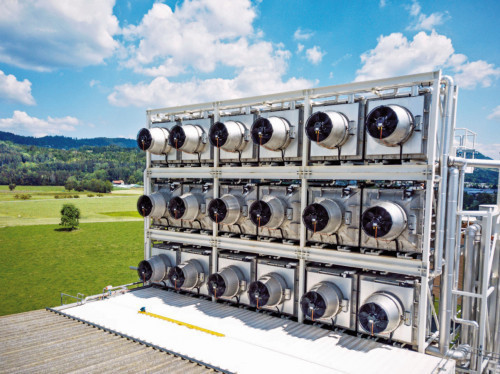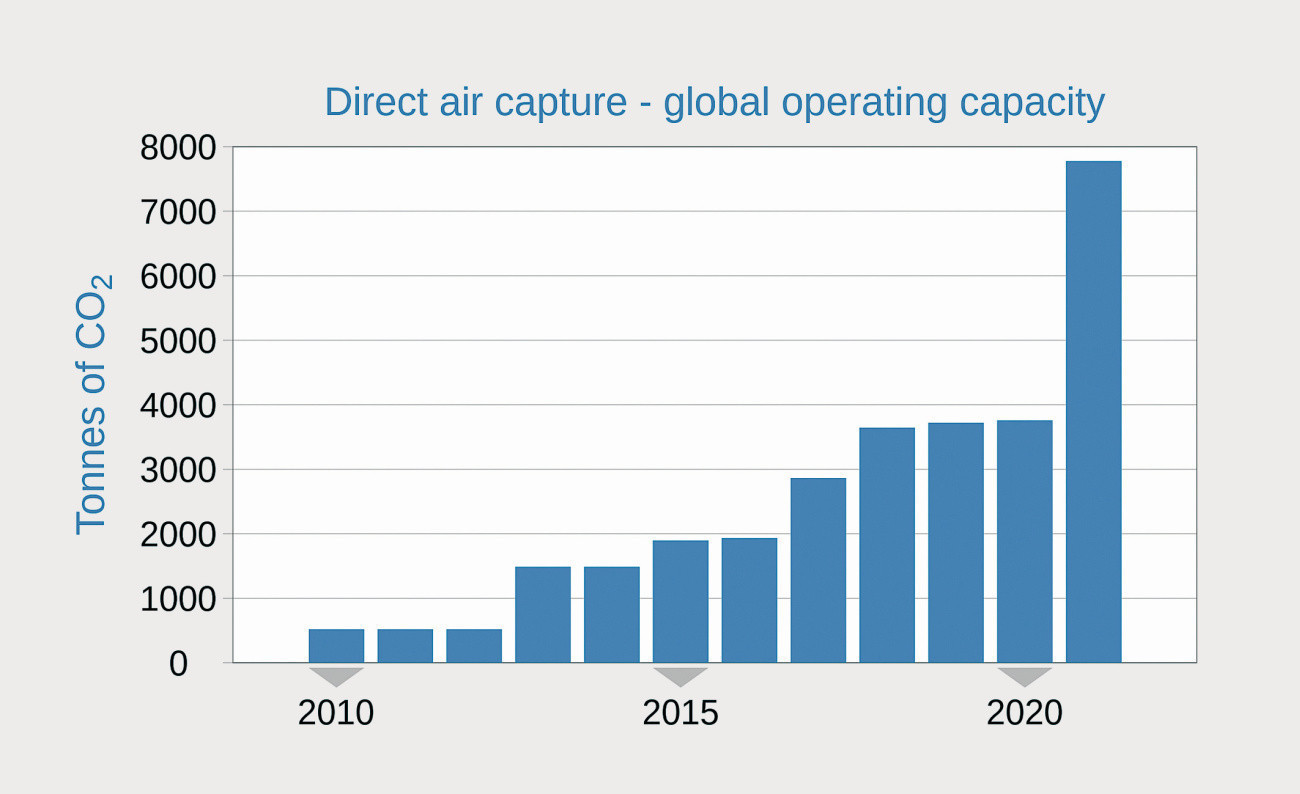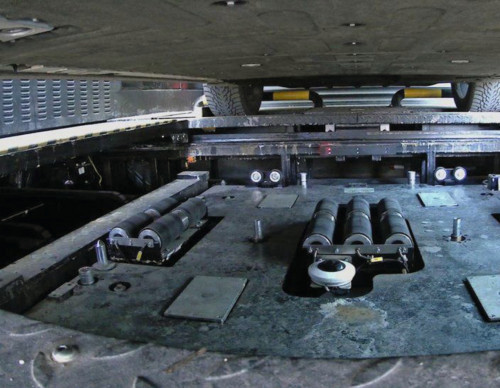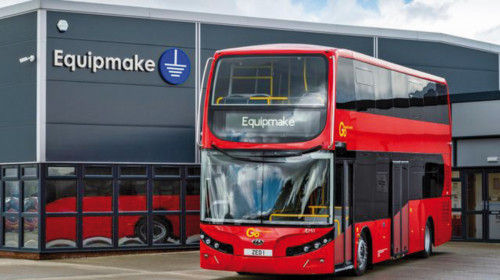The war continues - and yet so much has changed
The terrible war in Ukraine continues and, as in most previous wars, there is death, destruction and massacres, as the bloodbath in Butcha showed. But some war crimes can be solved with CCTV (Closed Circuit Television) cameras, which can be found on many Ukrainian streets, as in most European countries. One of these cameras recorded images of Russian soldiers shooting an innocent 68-year-old store owner. The Russian soldiers then noticed the presence of the CCTV camera and destroyed it. However, the images it had captured were stored many kilometers away. In short, thanks to modern technology, there are fewer secrets in modern warfare, and it is harder to hide the atrocities we have seen in Ukraine.
What will happen next? There are two main questions that most readers will probably be asking. Question 1: How will it end? Question 2: How should it end?
Question 1 - How will the war end? We can only guess, and even our best guesses could be overtaken by events. My own guess - and I'm no military expert - is that Putin is now pursuing two goals. In the short term, he wants to secure and annex the Donbas region - Donetsk and Luhansk. In the longer term, I believe he wants to build a land corridor along the entire southern coast, past Crimea to Moldova and the small communist enclave of Transnistria.
If successful, Ukraine would become a landlocked country with no access to the sea and no real means of exporting its huge wheat harvests and other agricultural produce. This would slowly ruin the country's economy and Ukraine might have to admit defeat within a year. Russia would then also gain control of the Black Sea. So perhaps that is Vladimir Putin's plan. But ... most experts believe that time is on Ukraine's side. The US, in particular, continues to supply new, modern weapons to Ukraine, and the former Eastern Bloc countries - Poland, the Czech Republic and others - have also been generous, as has Australia. Western European countries and the EU have far less reason to be proud. By contrast, Russia's arsenal is now largely reduced to older vehicles, and the country is also short of manpower, now even recruiting mercenaries in Syria.
Question 2 - How should the war end? There seems to be a major difference of opinion here between world leaders. President Biden and many other Western leaders believe that the war must end with a clear and humiliating defeat for Russia - and for President Putin in particular. Then perhaps he will somehow be deposed, not least because the Russians will then learn of the enormous cost of this war - in terms of human lives and financial resources. But France's President Macron and some others have a very different view. Macron firmly believes that if Ukraine wins this war, the West should give Putin a "face-saving" exit. I don't think Emmanuel Macron has explained his view in detail and I personally think it would be a terrible mistake. Perhaps Macron would be happy if Russia made a small but real territorial gain - as it did in Crimea in 2014. In other words, a "small reward" for starting this terrible war. Other leaders have warned that Vladimir Putin has a "very thin skin" and is quick to take offense - and that if cornered, he may be tempted to use a nuclear weapon.
Ukraine war - economic aspects
We have to keep in mind that the Russian GNP is smaller than the Italian GNP and only a fraction of the German GNP. The war is enormously expensive and the costs of the sanctions imposed by the USA and Europe are severely damaging the Russian economy. In theory, the West is so much stronger economically than Russia that it could bring the Russian economy to its knees in around a year. But in practice? Many Western companies are complaining about the loss of their sales in Russia. For them, the loss of Russian sales is shamefully more important than punishing Russian aggression. Some Western companies are finding new markets in the Middle or Far East, but many German companies are being economically damaged by the loss of business in Russia. Voices are therefore being raised throughout Europe calling for "peace in Ukraine". By this they implicitly mean a victory for Putin, even if it is only a modest victory. The Russian people are already seeing the cost of the war in their supermarkets, but another, much less obvious effect is the flow of Russians, most of them highly educated, leaving their country and emigrating first to places like Turkey and then perhaps to Europe. The exact number is not known, but estimates range from 100,000 to 1 million people. The coronavirus has severely damaged all economies worldwide, and now the war in Ukraine is adding to this. There are already severe food shortages in parts of East Africa and Sri Lanka, to name just two countries, and the lack of Ukrainian wheat will exacerbate the global food shortage. The sharp rise in energy prices, particularly for oil and gas, has hurt all the world's economies, but particularly certain sectors. Fertilizer production is energy intensive, which is reflected in high fertilizer prices. Farmers all over the world are using less (or no) fertilizer, and as a result their harvests will be smaller - leading to higher food prices. Most experts remain silent when asked how long it will take for oil and gas prices to return to their previous levels. I then try to inform Galvanotechnik readers about technical and scientific developments from around the world. But I find nothing in Russia - except new weapons.
Ukraine war - unpleasant surprises
In any war, some of the latest weapons and associated technology inevitably fall into the hands of the opposing armies, and this was also the case in Ukraine. But of course the reverse is also true: The Russians have captured some Ukrainian weapons of Western manufacture. The Ukrainians, on the other hand, captured many Russian tanks and other weapons, including cruise missiles such as the Kalibr, or at least their wreckage. And here came the unpleasant surprise - many of the parts in these missiles, semiconductors and other electronic components were manufactured in Germany, the USA and other Western countries. For example, it turned out that the single-cylinder gasoline engine used in a Russian drone was manufactured by a German company, 3W-Modellmotoren. It sold these engines to a company in the Czech Republic, World Logistic Group, which is actually Russian-owned. In many cases, as perhaps here, the manufacturers had no idea that their products would end up in Russia. One problem is that many goods are classified as "dual-use" (military/civilian) and Russia has built up a network of middlemen around the world to buy such goods and then send them on to Russia. NATO is now slowly building up an inventory of items discovered in captured Russian equipment. In some cases, the serial numbers on these items have been deliberately erased to disguise their origin. A reminder of how backward and weak the Russian electronics industry is and how far Russia lags behind the West or even China in the development of modern technologies. One man - Vladimir Putin - is causing hunger and misery worldwide.
On the way to a better world
 Fig. 2: A series of fans draw in air to feed theCO2 removal plantThereare so many exciting technological developments today, some of which are helping to solve major global problems and some of which are helping to improve our daily lives. And as I have noted in the past, I am not aware of any such developments from Russia.
Fig. 2: A series of fans draw in air to feed theCO2 removal plantThereare so many exciting technological developments today, some of which are helping to solve major global problems and some of which are helping to improve our daily lives. And as I have noted in the past, I am not aware of any such developments from Russia.
In industrialized countries, the focus is on reducingCO2 emissions by developing sustainable "green" energy sources to replace fossil fuels. However, some experts believe that this is not enough and that we actually need to remove billions of tons ofCO2 from the atmosphere - a daunting goal. And when this happens, what will happen to the capturedCO2? Some suggest simply burying it, perhaps under the seabed. Others suggest that it could be converted into a fuel via formic acid. However, the economic viability of such processes is questionable.
A British start-up based in a railroad arch in east London, backed by Elon Musk and Bill Gates, wants to build a machine that removes carbon directly from the air. Mission Zero(www.missionzero.tech) expects to have its first pilot plant up and running in Norfolk next year. The aim is to extract carbon dioxide from the atmosphere and use it to produce building materials. To develop its technology, the company has received 5 million US dollars from Breakthrough Energy Ventures, a fund led by Bill Gates and the mining company Anglo American. Mission Zero, which was founded almost two years ago, has also received 1 million US dollars from a foundation set up by Elon Musk - now the richest man in the world.
So far, however, less than 10,000 tons have been permanently removed worldwide - perhaps a millionth of the amount needed annually - and some experts doubt that a technological solution is feasible. In Mission Zero's workshop in Bethnal Green, a prototype carbon removal machine is taking shape (Fig. 1). In larger systems, fans draw in air (Fig. 2), which moves over a water-based solvent. The carbon dioxide from the atmosphere is dissolved in the liquid, which flows into a chamber divided by a membrane. The carbon now takes the form of negatively charged bicarbonate ions: When an electric current is applied, the ions concentrate on one side of the membrane. The separated carbon will eventually bubble out as pureCO2, which can be sold or stored. In a trial due to start next year near the market town of Thetford in Norfolk, it will be combined with fly ash, a waste product, to make building aggregate. Mission Zero reckons its method requires only about a third of the energy used by other carbon capture start-ups, such as Swiss rival Climeworks(www.climeworks.com), which operates the world's largest direct air capture plant in Iceland. "If we can get this up and running, we have a technology that can sequester megatons ofCO2," said Nicholas Chadwick, the CEO of Mission Zero. Figure 3 shows the progress of so-called DAC (Direct Air Capture) technology to date. The sheer statistics are brutal, considering the annual coal production of about 7.4 billion tons per year, which is burned to produce about 22 billion tons ofCO2. The combustion of crude oil and natural gas produces similar quantities. ExxonMobil claims to have already captured 120 million tons ofCO2 and believes that a new technology based on MOF (Metal Organic Frameworks) could revolutionize CCS (Carbon Capture & Storage).
See: https://corporate.exxonmobil.com/Climate-solutions/Carbon-capture-and-storage#NewCCStechnology
 Fig. 3: Growth in the direct capture of CO2 from the air
Fig. 3: Growth in the direct capture of CO2 from the air
The whole concept ofcapturing CO2, whether from the air (where it is diluted and therefore more expensive to extract) or from power plants, where it is more concentrated, is a huge engineering project. And it makes little sense if, at the same time, countries such as India or China are emitting billions of tons ofCO2 from their power plants. The only solution - and this has been widely discussed - is a so-called "carbon border tax" on imports from countries that continue to emitCO2. And there is no doubt that such a tax would meet with fierce resistance. Stormy times could be ahead!
EV developments
 Fig. 4: The battery is automatically removed from under the car, which is standing over a pitTheEVs (electric vehicles) of tomorrow will certainly be better than those of today. And as is so often the case, two (or more) technologies are under development. This raises the question of whether electric vehicle batteries should be recharged or simply replaced.
Fig. 4: The battery is automatically removed from under the car, which is standing over a pitTheEVs (electric vehicles) of tomorrow will certainly be better than those of today. And as is so often the case, two (or more) technologies are under development. This raises the question of whether electric vehicle batteries should be recharged or simply replaced.
In the new plant of the Chinese electric car manufacturer Nio in Norway, the battery is simply replaced with a new one. The technology is already widely used in China, but the new power swap station south of Oslo is the first in Europe. The company hopes that swapping out the entire battery will appeal to customers who are concerned about the range of electric cars or simply don't like queuing up to charge. All you have to do is reserve a space on the Nio app. At the charging station, the car is parked on the designated markings and the battery is automatically removed from the vehicle in a few simple steps and replaced with a fully charged one In less than five minutes, the exchange is complete and the car is ready for its journey.
According to the Nio staff, not only is the process faster (5 minutes instead of around 30-40 minutes), but the replaced battery is virtually new and state-of-the-art, meaning owners can keep their cars for longer.
The new station in Oslo can handle up to 240 battery swaps per day, and the company plans to set up a further 20 stations in Norway. The company has also teamed up with energy giant Shell to set up such stations across Europe, with the aim of installing 1000 such stations by 2025.
A new ownership model?
Nio is pursuing a slightly different business model in which customers buy the car and lease the battery. According to the company, this concept has several advantages. For example, the customer does not buy the most expensive part of an electric car - the battery. This reduces the purchase price by around 9,700 US dollars.
The buyer then has to pay the monthly fee for the battery, which ranges from around 140 euros to around 235 euros, depending on the size of the battery. However, these costs have another advantage. The car owner always has the latest battery technology. Nio is just one of the Chinese newcomers in Norway. Other newcomers are called Xpeng, Voyah and Hongqi, which are coming to Norway before entering the European market.
Norway is one of the leading European countries in the adoption of electric vehicles There are already 500,000 electric vehicles on the country's roads, and the country is aiming for zero emissions from all cars by 2025. According to the Norwegian Public Roads Administration, 83% of all new cars sold from January to March this year were fully electric vehicles, while only 6% had diesel or petrol engines.
Sales figures in Norway are still in the hundreds, but Nio plans to gain a foothold in Denmark, Sweden, Germany and the Netherlands this year. The company does not currently sell its battery swap stations to other car manufacturers, but has indicated that it would be open to other manufacturers using its technology. This could help to spread the system further so that it really catches on in Europe. So - replacement or recharging? New battery systems will enable faster charging, reducing the time savings of the exchange model. At the same time, a new business model would open up for electric vehicle manufacturers if they offered the car for sale and the battery for rent.
Not only batteries
 Fig. 5: The new Jewel E Bus in front of the Equipmake factoryWhile thebattery is the heart of an electric vehicle, there are other important elements, in particular the inverter, which converts the battery's direct current into alternating current. Equipmake, a Norfolk-based manufacturer of electric powertrain components, has launched a new inverter that could reduce the size of an electric vehicle's battery by 10%.
Fig. 5: The new Jewel E Bus in front of the Equipmake factoryWhile thebattery is the heart of an electric vehicle, there are other important elements, in particular the inverter, which converts the battery's direct current into alternating current. Equipmake, a Norfolk-based manufacturer of electric powertrain components, has launched a new inverter that could reduce the size of an electric vehicle's battery by 10%.
The new HPI-800 inverter has been developed using silicon carbide (SiC). This means it can switch current at up to 40 kHz, enabling higher power, lower power losses and improved overall efficiency for electric vehicles. Until now, electric vehicles have used inverters with insulated-gate bipolar transistors (IGBTs) that switch current at up to 20 kHz. The faster and more efficient the inverter is, the more efficient the vehicle is overall and the greater the range that can be extracted from the battery.
SiC inverters such as the HPI-800 are also smaller and lighter than conventional inverters, allowing engineers and designers to benefit from aerodynamic and packaging improvements - while reducing a vehicle's cooling requirements. The HPI-800 is 494 mm long, 287 mm wide and 94 mm high. It weighs 12.7 kg and delivers a maximum continuous output power of up to 400 KW, depending on the motor.
It is predicted that battery electric vehicles (BEV) equipped with silicon carbide inverters will overtake traditional IGBT units by 2024, and by 2030, 95% of all BEVs will use silicon carbide.
The initial cost of SiC inverters will be more than offset by the benefits of the additional power. In a typical high performance EV sports sedan, the associated efficiency gains can reduce the size of the battery by at least 10% or around 40-50 kg. At the same time, the efficiency and performance gains that the technology can bring to an electric car will increase its appeal to customers.
Equipmake(www.equipmake.co.uk) is also developing a new electric double-decker bus in partnership with London's largest bus operator, Go-Ahead. It will be tested in the capital over the next few months. The Jewel e-bus is powered by Equipmake's zero-emission drivetrain (ZED) and the body is manufactured by Spanish coachbuilder Beulas.
The ZED was initially tested in single-decker buses in Buenos Aires, Argentina. It gives the Jewel E an electric range of up to 450 km - the longest of any electric double-decker bus in the world. This means that the bus can run a full 10 or more hour shift without changing buses.


